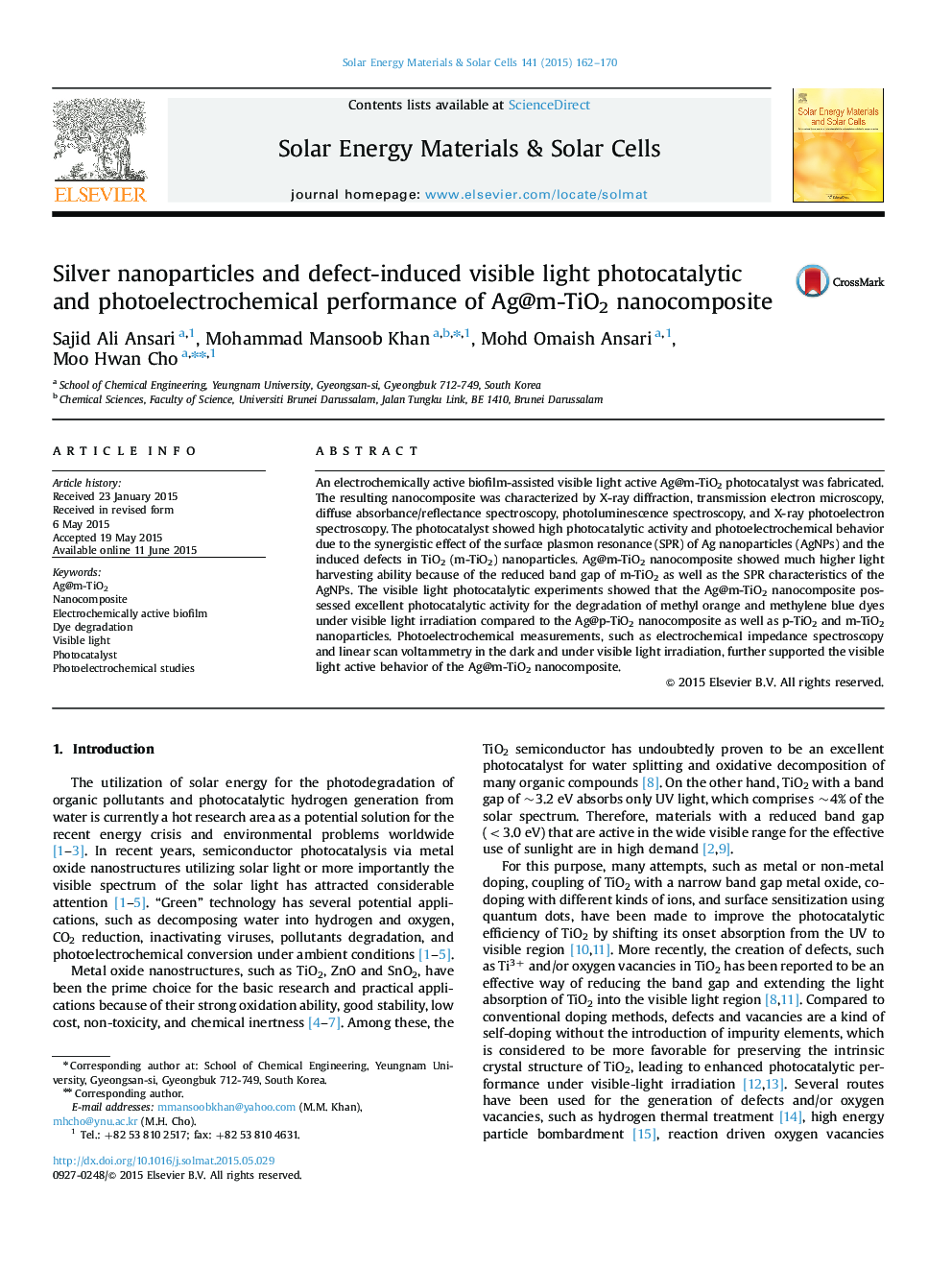| Article ID | Journal | Published Year | Pages | File Type |
|---|---|---|---|---|
| 77737 | Solar Energy Materials and Solar Cells | 2015 | 9 Pages |
•Electrochemically active biofilm (EAB).•EAB-assisted synthesis of Ag@m-TiO2 photocatalyst.•Ag@p-TiO2 and Ag@m-TiO2 nanocomposite for visible light photocatalysis.•Ag@p-TiO2 and Ag@m-TiO2 nanocomposite as photoelectrode.•Metal nanoparticles and defects-induced visible light photocatalysis.
An electrochemically active biofilm-assisted visible light active Ag@m-TiO2 photocatalyst was fabricated. The resulting nanocomposite was characterized by X-ray diffraction, transmission electron microscopy, diffuse absorbance/reflectance spectroscopy, photoluminescence spectroscopy, and X-ray photoelectron spectroscopy. The photocatalyst showed high photocatalytic activity and photoelectrochemical behavior due to the synergistic effect of the surface plasmon resonance (SPR) of Ag nanoparticles (AgNPs) and the induced defects in TiO2 (m-TiO2) nanoparticles. Ag@m-TiO2 nanocomposite showed much higher light harvesting ability because of the reduced band gap of m-TiO2 as well as the SPR characteristics of the AgNPs. The visible light photocatalytic experiments showed that the Ag@m-TiO2 nanocomposite possessed excellent photocatalytic activity for the degradation of methyl orange and methylene blue dyes under visible light irradiation compared to the Ag@p-TiO2 nanocomposite as well as p-TiO2 and m-TiO2 nanoparticles. Photoelectrochemical measurements, such as electrochemical impedance spectroscopy and linear scan voltammetry in the dark and under visible light irradiation, further supported the visible light active behavior of the Ag@m-TiO2 nanocomposite.
Graphical abstractFigure optionsDownload full-size imageDownload as PowerPoint slide
